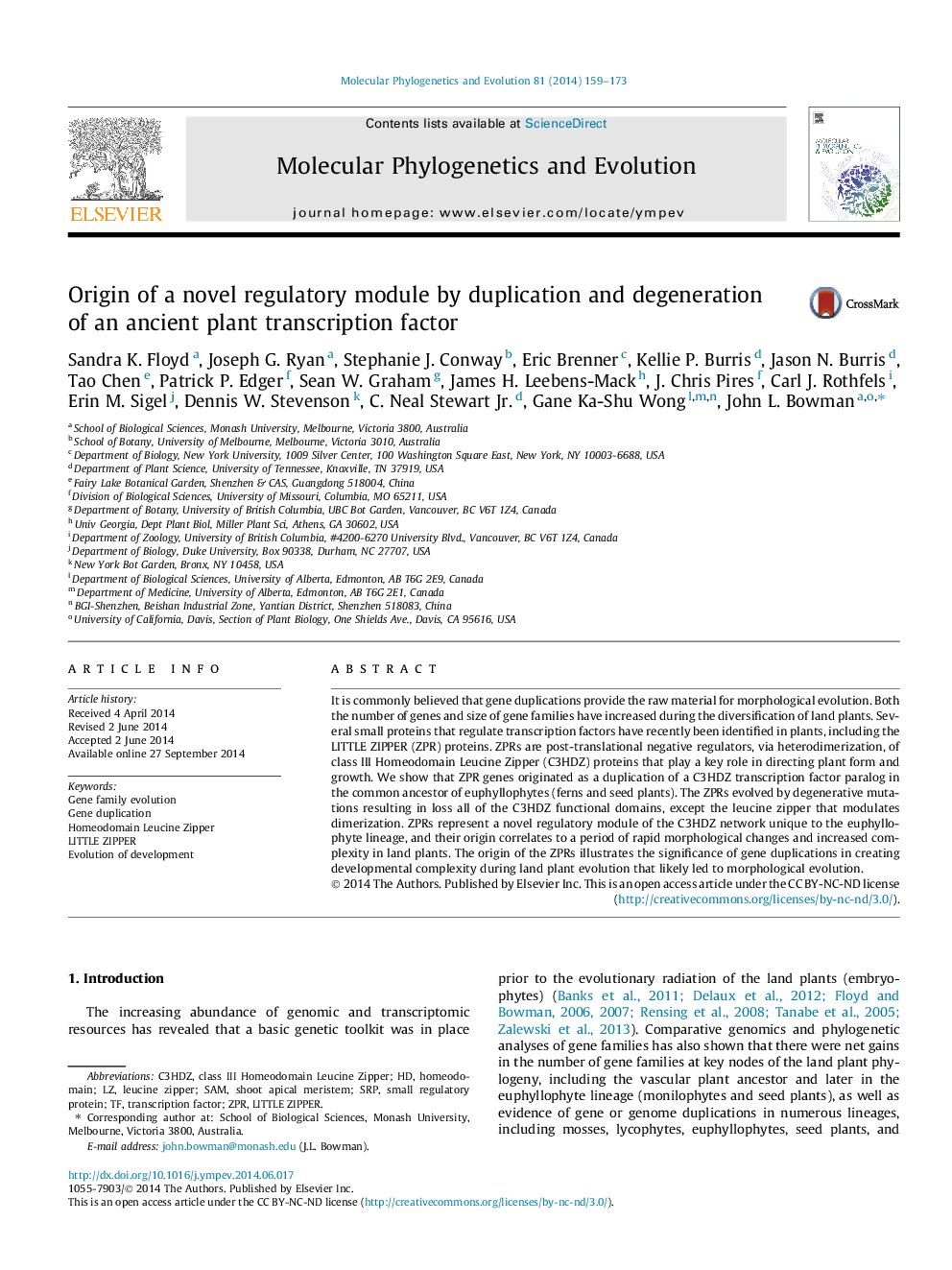| کد مقاله | کد نشریه | سال انتشار | مقاله انگلیسی | نسخه تمام متن |
|---|---|---|---|---|
| 5919156 | 1570814 | 2014 | 15 صفحه PDF | دانلود رایگان |
- LITTLE ZIPPERs (ZPRs) regulate class III HD-Zip (C3HDZ) function in Arabidopsis.
- We show that ZPR genes are also present in gymnosperms and monilophytes.
- Non-flowering ZPRs have greater sequence similarity to C3HDZs than angiosperm ZPRs.
- ZPR genes are phylogenetically related to and derived from the C3HDZ genes.
- ZPRS are a novel regulatory module derived from an ancient gene duplication.
It is commonly believed that gene duplications provide the raw material for morphological evolution. Both the number of genes and size of gene families have increased during the diversification of land plants. Several small proteins that regulate transcription factors have recently been identified in plants, including the LITTLE ZIPPER (ZPR) proteins. ZPRs are post-translational negative regulators, via heterodimerization, of class III Homeodomain Leucine Zipper (C3HDZ) proteins that play a key role in directing plant form and growth. We show that ZPR genes originated as a duplication of a C3HDZ transcription factor paralog in the common ancestor of euphyllophytes (ferns and seed plants). The ZPRs evolved by degenerative mutations resulting in loss all of the C3HDZ functional domains, except the leucine zipper that modulates dimerization. ZPRs represent a novel regulatory module of the C3HDZ network unique to the euphyllophyte lineage, and their origin correlates to a period of rapid morphological changes and increased complexity in land plants. The origin of the ZPRs illustrates the significance of gene duplications in creating developmental complexity during land plant evolution that likely led to morphological evolution.
Journal: Molecular Phylogenetics and Evolution - Volume 81, December 2014, Pages 159-173
